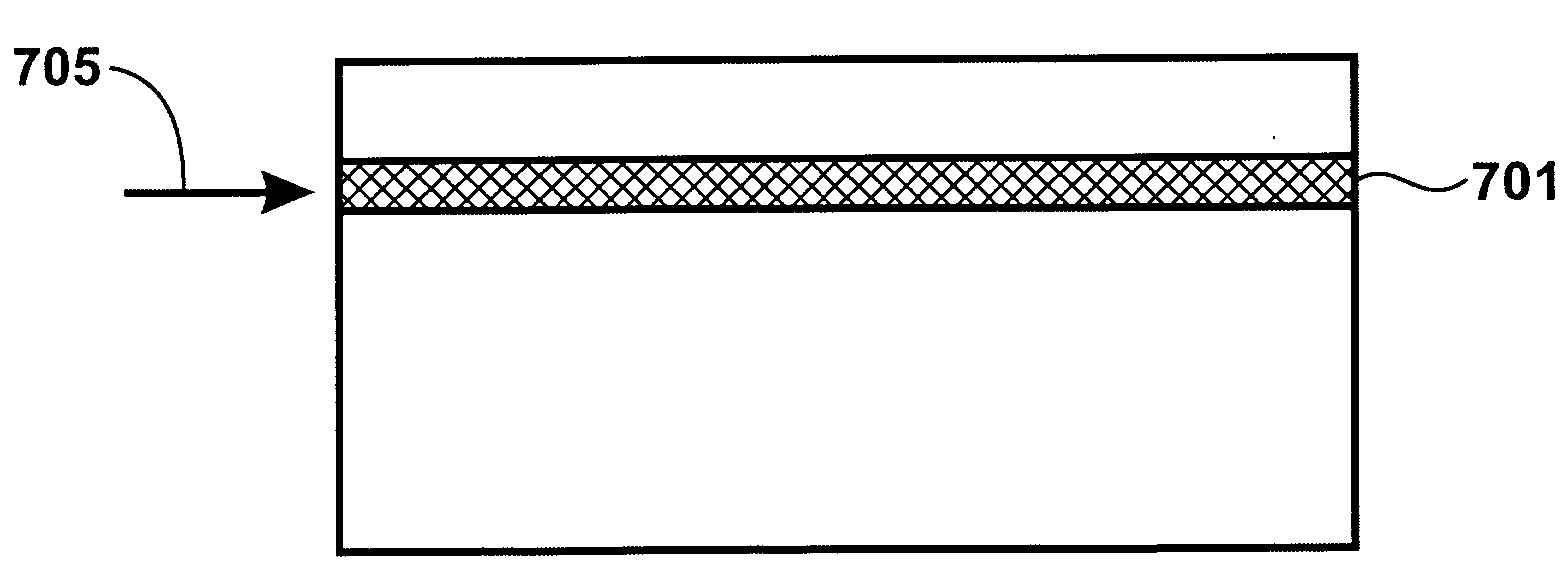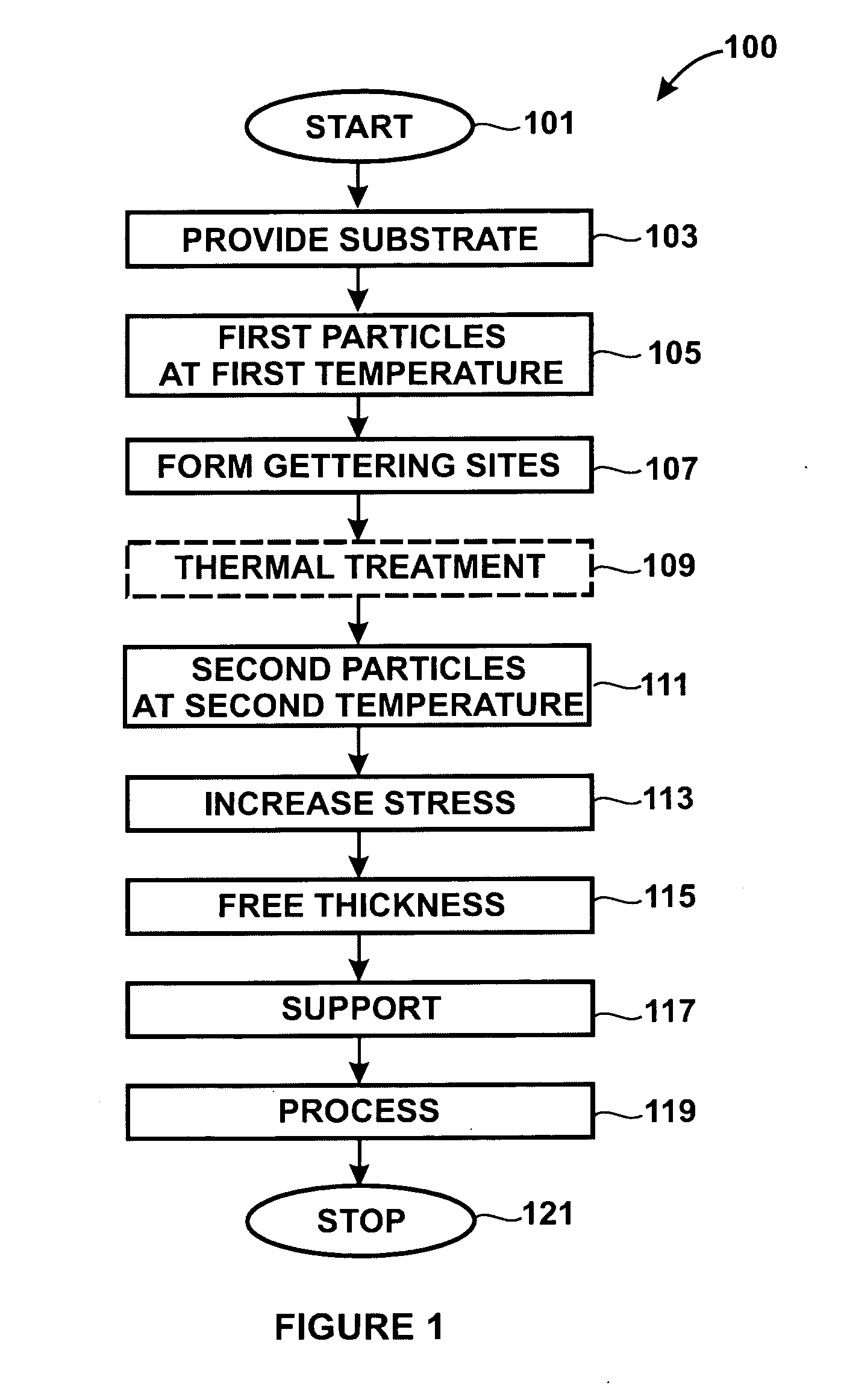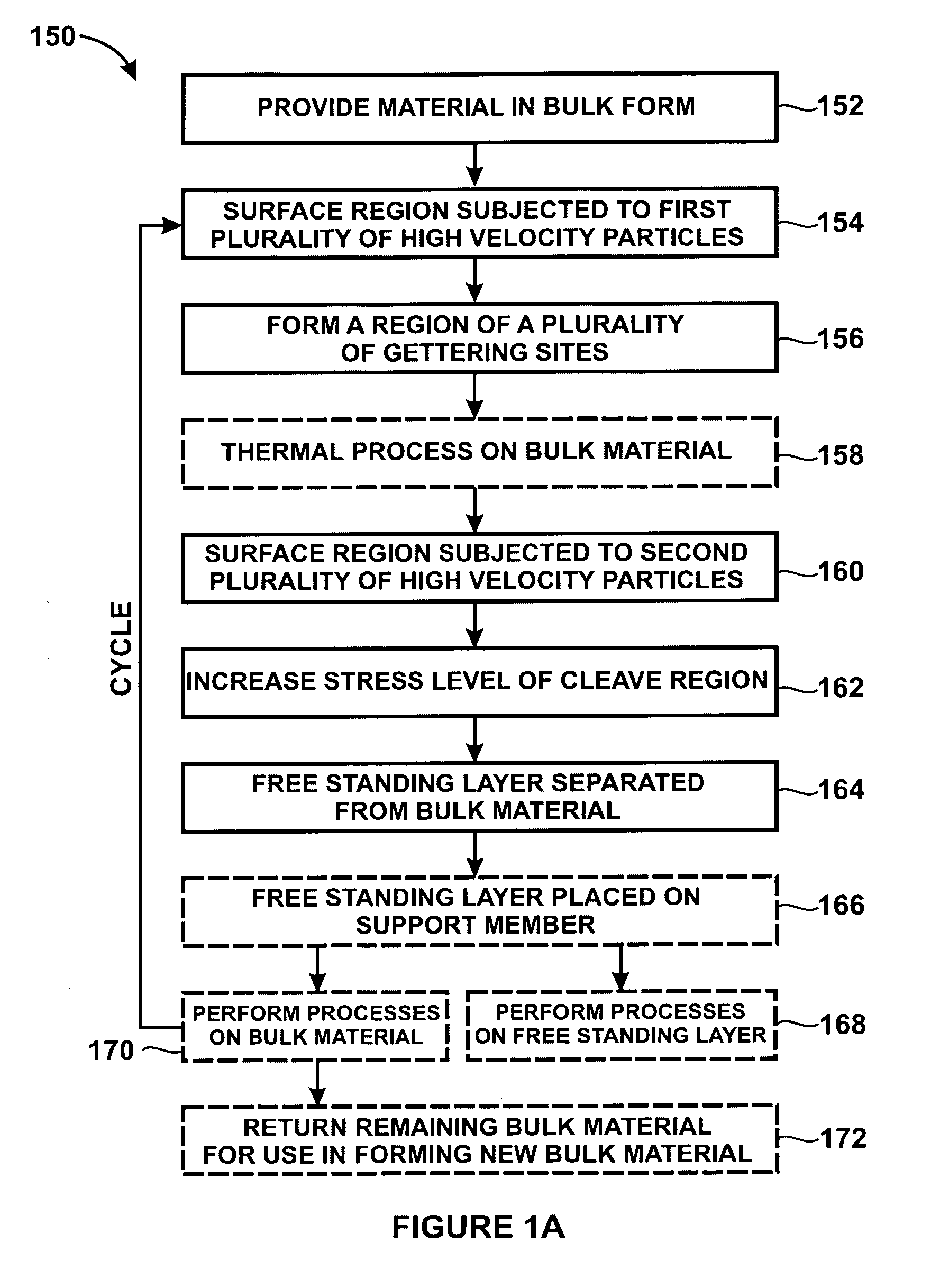Method and structure for thick layer transfer using a linear accelerator
a linear accelerator and thick layer technology, applied in accelerators, electrical devices, semiconductor devices, etc., can solve the problems of insufficient optimum properties of solar cells, many limitations of solar cells, and difficult manufacturing of materials, so as to reduce the amount of semiconductor materials, enhance the stress in the cleave region, and achieve high energy implantation.
- Summary
- Abstract
- Description
- Claims
- Application Information
AI Technical Summary
Benefits of technology
Problems solved by technology
Method used
Image
Examples
Embodiment Construction
[0040]According to embodiments of the present invention, techniques including a method for forming substrates are provided. More particularly, embodiments according to the present invention provide a method to form a free standing layer of material from a semiconductor material. In a specific embodiment, the free standing layer of material is provided using a plurality of high energy particles to cause a formation of a cleave plane in the semiconductor substrate. The method according to present invent invention can be used in a variety of application, including but not limited to semiconductor device packaging, photovoltaic cells, MEMS devices, and others.
[0041]According to embodiments of the present invention, a free standing film may be separated from a bulk material. In one embodiment, a free standing layer of semiconductor material such as single crystal silicon, having a thickness of 20 μm or greater, may be cleaved from a bulk ingot utilizing high energy implantation. In one e...
PUM
 Login to View More
Login to View More Abstract
Description
Claims
Application Information
 Login to View More
Login to View More - R&D
- Intellectual Property
- Life Sciences
- Materials
- Tech Scout
- Unparalleled Data Quality
- Higher Quality Content
- 60% Fewer Hallucinations
Browse by: Latest US Patents, China's latest patents, Technical Efficacy Thesaurus, Application Domain, Technology Topic, Popular Technical Reports.
© 2025 PatSnap. All rights reserved.Legal|Privacy policy|Modern Slavery Act Transparency Statement|Sitemap|About US| Contact US: help@patsnap.com



